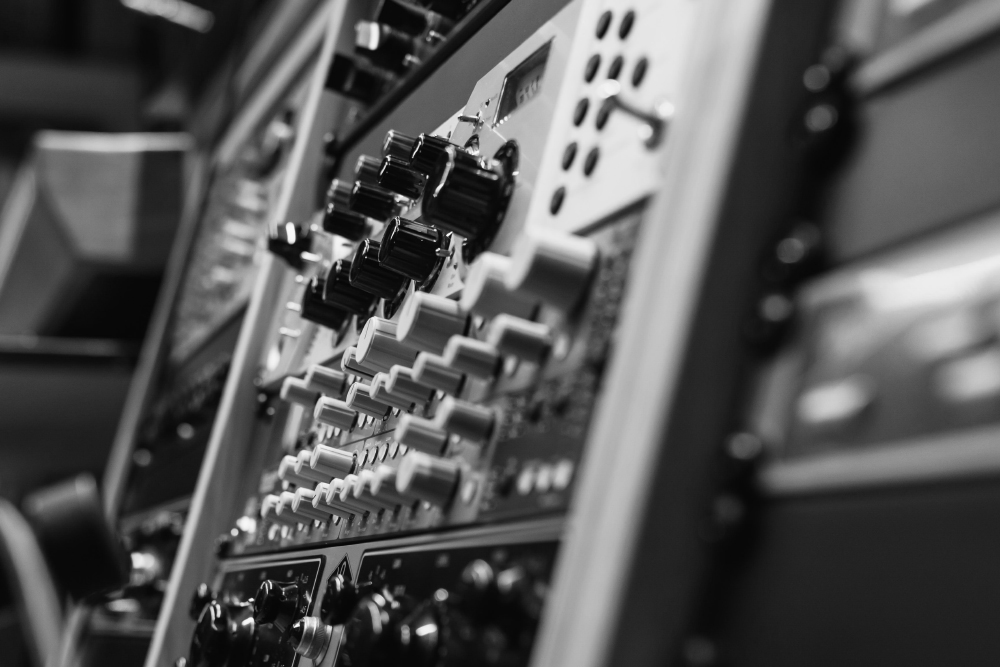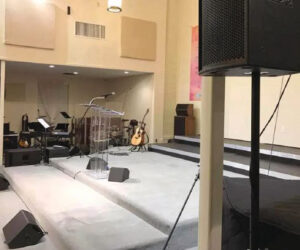Editors note: From the archives of the late, great Recording Engineer/Producer (RE/P) magazine, this feature provides a look at the uses of compressors and limiters, circa October 1986. (Volume 17, Number 5).
Specific examples of compressor and limiter settings can provide a valuable starting point when using them to process instrument and vocal sounds.
Compressors and limiters have become to the recording engineer what lens filters are to a camera operator: a way of controlling dissident sound or light elements for enhanced spectrum placement.
You can use compressors and limiters to increase the overall level of program material and hence improve the signal-to-noise ratio, and as a creative device for processing sounds. Compression and limiting ratios, attack and release times, and the degree of compression can help define an engineer’s trademark sound, and many of us use specific hardware to record specific instruments and vocals.
The positive implication of this approach is that there is no substitute for experience. The negative implication in the artistic world is that mistakes play a major role in the creation of unique techniques and sounds. As with any creative tool, it is the user who determines the application and execution of a processing device.
The main control parameters of compression and limiting are peak and averaging (RMS); their response signal levels more or less parallel that of peak and VU meters. An averaging device responds to a signal’s average level, like the human ear and a VU meter, and therefore tracks the overall power rather than the transient peaks. The result is a smoother response characteristic.
A peak-responding limiter, on the other hand, is designed to track the audio program peaks like a PPM; it is therefore much quicker responding and can catch instantaneous spikes. Because many of today’s most popular compressor /limiters do not offer variable attack and release times, different devices are often used to suit the nature of the sound to be controlled.
Sound Examples
By compressing a bass drum by 1 dB to 3dB or more during mixdown, using a compression ratio between 2:1 and 4:1, that tight “popping” or “clicking” sound heard on many dance singles can be achieved, without using an inordinate amount of high-end EQ. By using an averaging compressor with a slow attack time, the first transients of the signal envelope will be allowed to punch through before the compressor reduces the sound level above threshold.
The result is a sound with a lot of “attack,” but without the excessive amount of level that might result from a highly equalized bass drum.
A variation on this theme is to mult the bass drum. By keeping the primary kick signal natural-sounding for thump, and compressing the paralleled kick signal for click, you can blend the two for power and click. By using a very fast attack time the leading edge of the sound envelope can be compressed as well, creating a unique but powerless bass drum effect.
Snare drums can be processed similarly. By heavily compressing the multed snare with a slow release time, a certain amount of sustain can be added by the pumping action of the compressor release. Radical equalization of the compressed channel can be added to create a highly processed sound. Tambourines and other percussive, metallic sounds that have very high transient peaks can often cause circuit overload and tape saturation.
In order to prevent this, peak limiting with a very fast attack time and a compression ratio between 8:1 and 20:1 can be used to help tame those excessive peaks on the leading edge of the sound envelope. Percussive instruments that are played with sticks or various mallets of wood or metal (including marimba, vibes, steel drum, glockenspiel, tubular bells, triangle, cowbell and timpani) often produce intense overtones and transients.
In fact, the overtones of certain notes may almost be as loud as the primary frequency, creating vast swings in level between notes. Because of the cutting nature of high- frequency instruments, where they will be placed in the mix and the fact that they cause high crosstalk levels between adjacent tracks on analog recorders, correct mixing technique and lower recording levels without limiting or compression is usually more effective than peak limiting or compression.
Midrange and lower frequency instruments are a different proposition. They do not cut through a mix nearly as well as higher frequency instruments, and still may retain heavy harmonic overtones. As a result, some form of compression with relatively fast attack and moderate release times is usually necessary to even out VU levels between notes. Low-frequency instruments, such as electric bass, often need leveling for a variety of reasons, including the way in which the pickups are set up, the pickup’s frequency response or possibly because of the way the musician is playing. Certain notes tend to jump out audibly and need controlling.
Another problem can be caused by level discrepancy between certain notes, which will be obvious when viewing levels on a VU meter. To ensure proper tape levels, compress the sound by up to 4dB or 5dB, with a 2:1 or 4:1 ratio. If the attack time of the compressor is set too fast, the initial envelope of the note can be affected adversely, causing a punchless, “rubbery” sound.





















